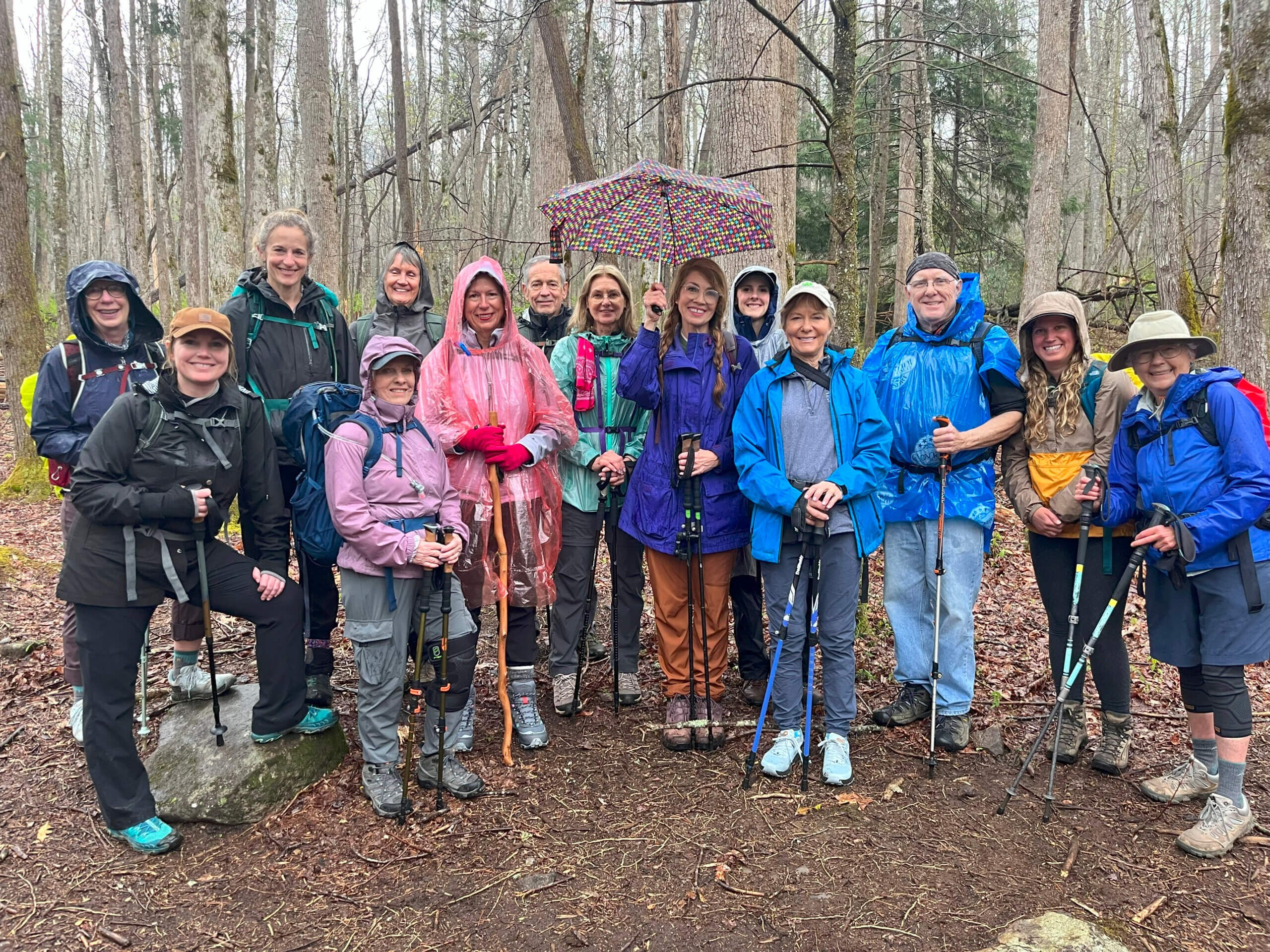by Danny Bernstein
April showers bring May flowers. But first they bring a lot of rain.
The first hike in the Trails Forever hiking series was on Porters Creek in the Greenbrier section of Great Smoky Mountains National Park. Porters Creek Trail is a 7.2 mile out-and-back hike.
The weather forecast for the day was rain, rain, rain. Olivia Wright, Outreach Coordinator for FOTS, makes the decision on whether the hike is on or not. “We do say it’s rain or shine,” she says when I bring up the subject of the forecast. The hike is on. Her pre-hike email state:
Please remember to pack a rain jacket as we will probably have a rainy start.
I meet Karen Shultz, the sweep for the hike, in the rain. The sweep is the person who stays in the back and makes sure everyone is together and keeping up.
We drive from Asheville to the trailhead. Will anyone be there? My usual answer is, “Whoever shows up shows up.” But I am nervous; it’s a long way to drive in the rain if only Olivia and Kathryn Hemphill, the second FOTS staff member, are there. We had arranged to meet the group in the first parking area on Greenbrier Road to carpool and not take up many parking spaces at the trailhead. All together 15 hikers show up eager to see flowers, historic sites and just hike. Yeah!!
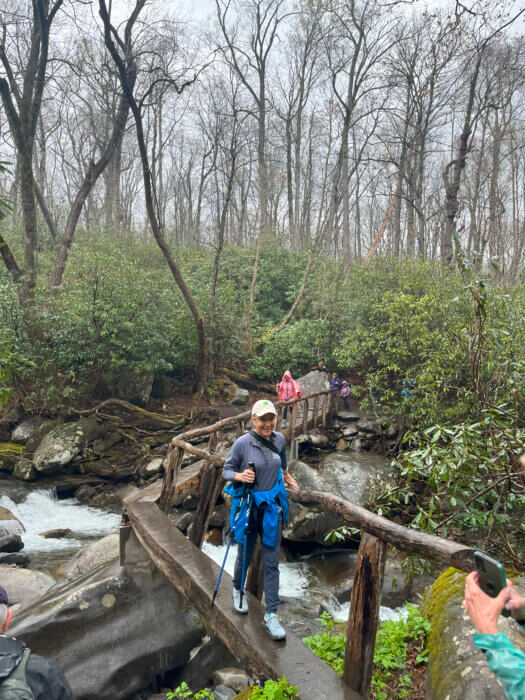
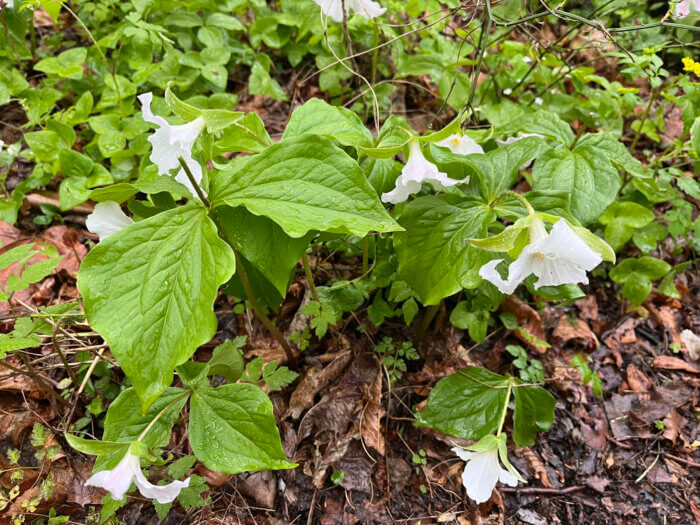
Experienced Smokies hikers mingle with a few new faces. Missy Kane, who led the “On the Trail with Missy” program, and now a leader in the new FOTS hiking program, is here. Greg Wilkerson, Associate Editor from The Mountain Press in Sevier County, joins us to write about the program. Raincoats and pack covers on, we start up the trail.
Porters Creek in the Greenbrier, Tennessee, section of Great Smoky Mountains National Park is known for its spring flowers. The trail does not disappoint. It is a wild combination of almost every spring flower in the Wildflowers of the Smokies book. And then some. Missy Kane focuses on flowers. She ended up identifying more than 30 species of flowers; see the list at the bottom of this blog.
In the first mile, we stop off at the site of the Ownby settlement including a well-maintained cemetery and the remains of a vehicle. At this point, we have been walking on what had obviously been a road. People lived here and some had cars. The Ownbys and the Whaleys were two of the original families that settled in the Greenbrier area.
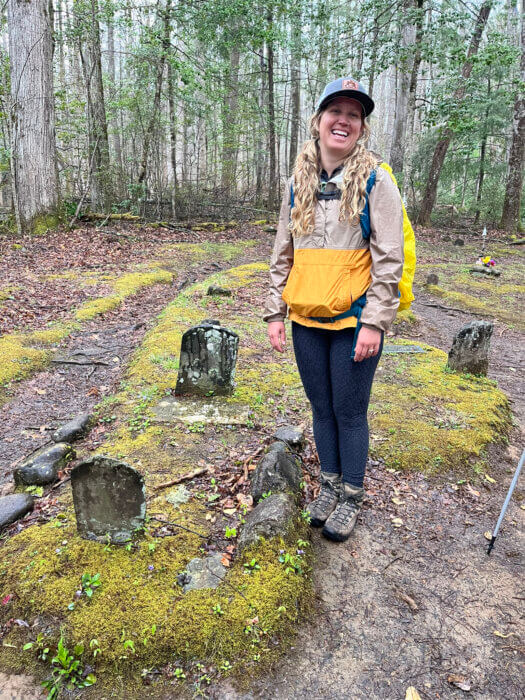
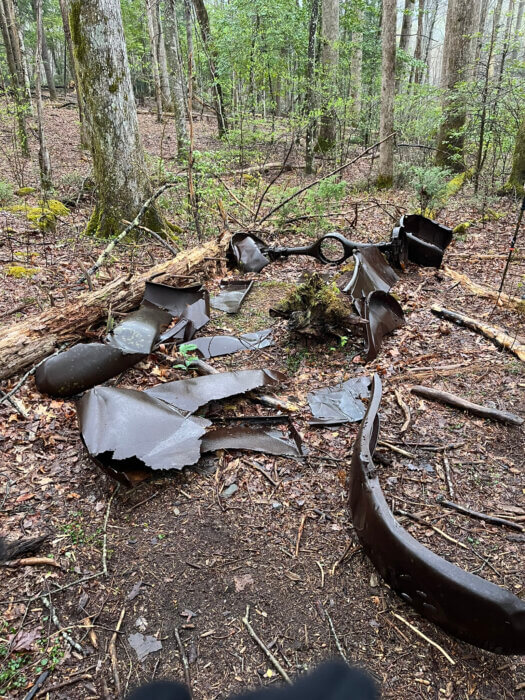
At the end of the wide road, we turn right to see the John Messer barn and farm site. The barn is a double cantilever structure which is unique to East Tennessee. Pinkey Whaley built the barn about 1875; later John Messer bought the whole farm. The Messers were an old and prosperous family on both sides of the mountains. There is also a Messer barn in Cataloochee on the North Carolina side of the park.
Unfortunately, a powerful windstorm last year took down the barn roof and ruined much of the rest of the building. At this point, according to Olivia Wright, the barn has been stabilized enough to allow the historic preservation experts to study the building and to see what needs to be done to repair it.
We then explore the cabin in back of the barn, which was built by the Smoky Mountain Hiking Club in the mid-1930s. Members of the club were permitted to use the cabin as an overnight facility until 1981. Unfortunately, that historic cabin was also damaged by the same windstorm, and we cannot go inside. A springhouse and outhouse are located behind the cabin near the tree line.
The Park has put the repair of these buildings on its “needs list.” Friends of the Smokies has pledged financial support for this need. We have to remember that Great Smoky Mountains National Park has more historic buildings than any other park in the National Park Service. Maintaining and repairing takes money. The park website explains the importance of historic structures very well at https://www.nps.gov/grsm/learn/nature/dff609-meet.htm.

After we cross the creek, the climbing starts. The carpet of fringed phacelia is past its peak but still impressive. Halfway up the trail, we stop at Fern Falls for pictures and a short break. For the rest of the hike, the trail parallels Porters Creek. Lots of cascades and water whirling around huge rocks.
We continue our climb until the top at campsite #31 where we have lunch. The rain is still coming down. I am no longer worried about stepping into mud or a puddle; everything on me is wet.
I had planned to share a couple of short stories, but no one is going to be interested as the rain keeps on steadily. We have a very quick lunch. We come down carefully so as not to slip and to identify more flowers.
April is the cruellest month, breeding
Lilacs out of the dead land, mixing
Memory and desire, stirring
Dull roots with spring rain.
T.S. Eliot was very depressed – and wrong. I wish I could have taken him on the Porters Creek Trail with Friends of the Smokies.
May 2024 Hike
The next “Challenging” hike will be on Tuesday, May 14, 2024. It will combine the Mountains-to-Sea Trail, Andrews Bald and Clingmans Dome. We will have a special guest and ambassador from Friends of the Mountains-to-Sea Trail.
List of flowers identified by Missy Kane
- Sweet white trillium
- Large flower trillium
- Chickweed
- Bishop cap
- Foamflower
- Fringed phacelia
- Rue anemone
- Bishop cap
- Toothwort
- Squirrel corn
- Dwarf ginseng
- Blue bead lily
- Dutchman britches
- Wood sorrel
- Stone crop
- Brook lettuce
- White phacelia
- Yellow mandarin
- Yellow trillium
- Yellow trout lily
- Lily ragwort
- Lousewort
- Showy orchis
- Dwarf crested iris
- Wild geranium
- Phlox
- Purple violet
- Little brown jug
- Yellow trillium
- Yellow mandarin
- Yellow buttercup
- Halberd-leaved violet
